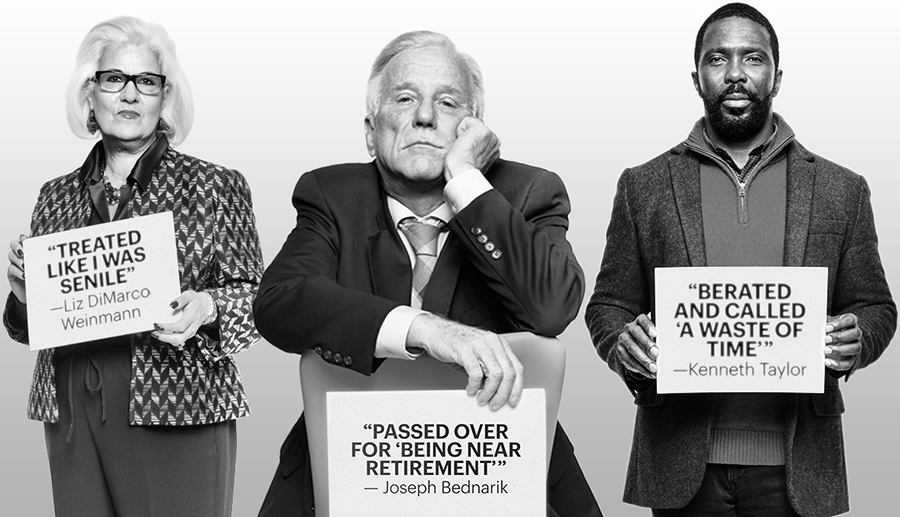Your resume gets 6 seconds of review time. But what if those 6 seconds are spent calculating your age instead of evaluating your qualifications?
Despite decades of anti-discrimination legislation, ageism in corporate hiring remains one of the most pervasive yet invisible barriers in today’s job market. The numbers are staggering: Two-thirds of older workers have seen or experienced age discrimination in the workplace, while older applicants receive 11 to 50 percent lower odds of being considered over younger applicants. Even more striking, applicants over 65 have half the odds of receiving a callback compared to their younger counterparts.
While companies proudly champion diversity and inclusion initiatives, workers over 55 face a harsh reality: their experience is often viewed as a liability rather than an asset.
The Hidden Mathematics of Age Discrimination
The problem isn’t just cultural—it’s systematic. Corporations have developed sophisticated methods to filter out older candidates before they ever reach an interview room:
- Application Archaeology: Standard job applications routinely request high school or college graduation dates, allowing recruiters to perform instant age calculations. Why does a 2024 employer need to know you graduated in 1985? The answer is uncomfortable but clear.
- Employment Timeline Traps: Instead of asking “How long did you work at Company X?” applications demand specific start and end dates for each position. A 25-year career span immediately telegraphs age, regardless of relevance or performance.
- Digital Age Reveals: LinkedIn’s format requires exact employment dates, creating an unavoidable chronological footprint. Profile photos add another layer of bias, allowing split-second age assessments that influence decisions before qualifications are even considered.
- The Reference Red Flag: Requesting references from positions held 15-20 years ago serves little practical purpose beyond age detection—most contacts have moved on, retired, or passed away.
- Salary History Calculations: When combined with experience levels, previous salary ranges can indicate career stage and, by extension, age brackets.
Why This Matters Beyond Fairness
The data reveals a disturbing pattern: more than 40% of workers over 40 report experiencing age discrimination in the last three years, with nearly 40% citing ageism as their top concern when job searching. For older women, the statistics are even more alarming, with callback rates up to 47% lower than those of younger applicants.
This isn’t just about individual hardship—it’s economic inefficiency at scale. Over 35% of long-term discouraged workers are over age 55, representing a massive waste of human capital. Organizations systematically exclude their most experienced talent pool during skills shortages, choosing cultural “fit” over proven capability. The irony is stark: the same companies struggling to find experienced leaders are simultaneously filtering out candidates who’ve actually led through multiple business cycles.
A Framework for Change
Meaningful reform requires both legal evolution and corporate accountability:
Legislative Solutions:
- Prohibit graduation date requests on initial applications
- Mandate “duration-based” employment history (e.g., “3 years” instead of “2018-2021”)
- Require skills-based initial screening before biographical data collection
- Make job offers contingent on credential verification, not upfront age disclosure
Corporate Best Practices:
- Implement “blind” resume reviews focusing solely on skills and achievements
- Establish diverse interview panels that include various age demographics
- Create mentorship programs pairing seasoned professionals with emerging talent
- Measure and report age diversity metrics alongside other inclusion data
The Path Forward
These aren’t revolutionary concepts—they’re logical extensions of existing anti-discrimination frameworks. Yet their implementation would fundamentally shift how we evaluate talent, moving from chronological bias toward competency-based assessment.
The questions we ask reveal our priorities. When we prioritize graduation dates over graduation honors, employment dates over employment achievements, and profile photos over professional portfolios, we’re not hiring for excellence—we’re hiring for demographics.
The conversation starts here: What other subtle forms of age discrimination have you witnessed in hiring processes? How can we better align our recruitment practices with our stated values of merit-based selection?
Let’s challenge the status quo together. Share your experiences and ideas below.
